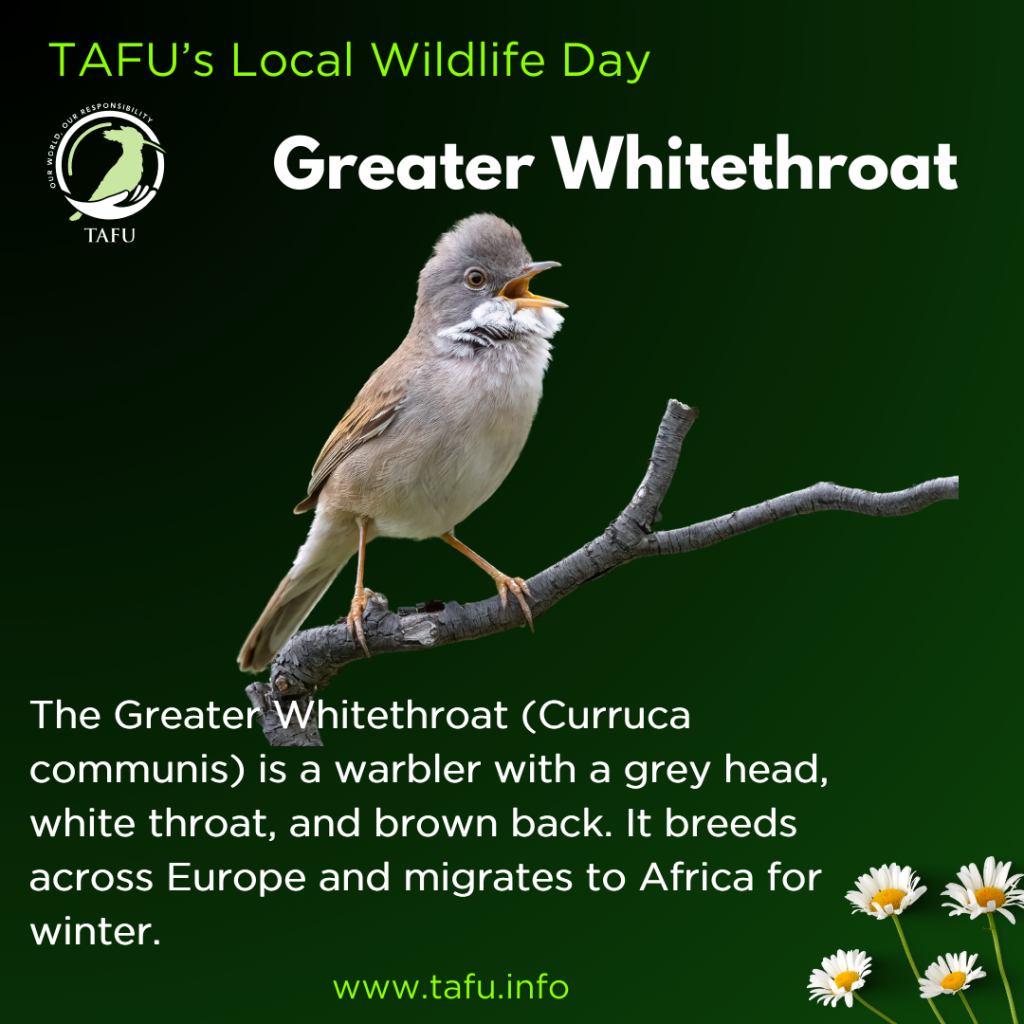Greater Whitethroat
As part of the countdown to TAFU’s Local Wildlife Day on the 11th of July – Species no. 9.
Stay tuned – 34 more days and 34 more species until then!
The Greater Whitethroat (Curruca communis) is a medium-sized warbler, around 14 cm in length, known for its grey head, white throat, and brown back. Males are more vibrant with grey heads and a white throat, while females are duller and lack the grey head. This species breeds across Europe and some parts of Asia, from the UK to central Asia. They prefer open countryside, scrubland, and hedgerows for nesting, avoiding urban and mountainous areas.
Whitethroats are migratory birds, spending the breeding season in Europe and the winter in Africa, particularly in the Sahel region. They feed mainly on insects but also consume berries and soft fruits. Their song is a fast, scratchy warble, often heard from perches in their breeding habitat.
Nesting occurs in low shrubs or brambles, with males constructing several nests for females to choose from. Typical clutches contain 4-5 eggs, with both parents sharing incubation duties. Despite being widespread, their populations are monitored due to habitat changes and environmental conditions in their winter grounds. So, let’s aid this little creature and maintain our gardens to have dense shrubs and hedgerows and provide insect-friendly habitats!

